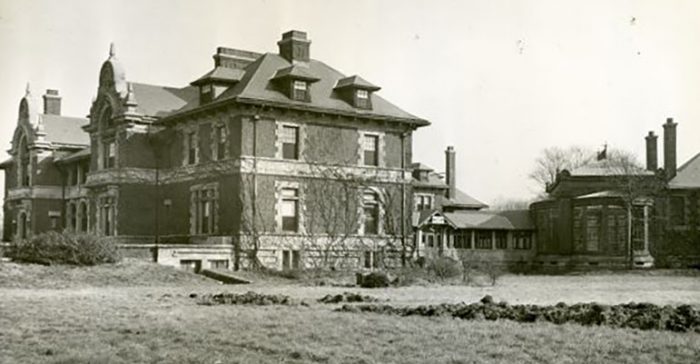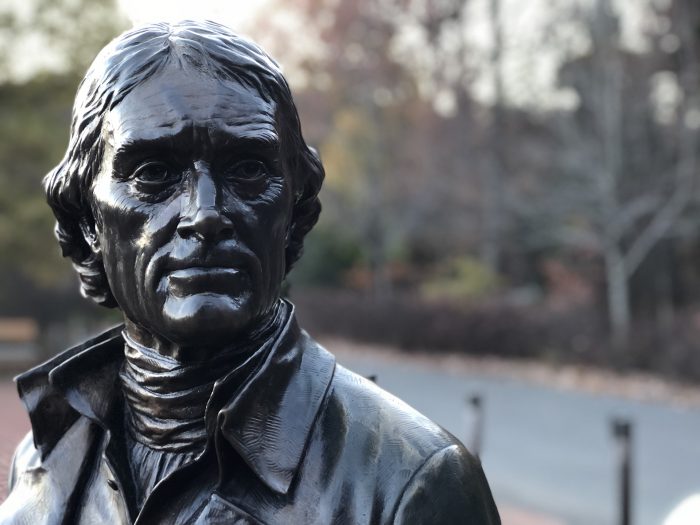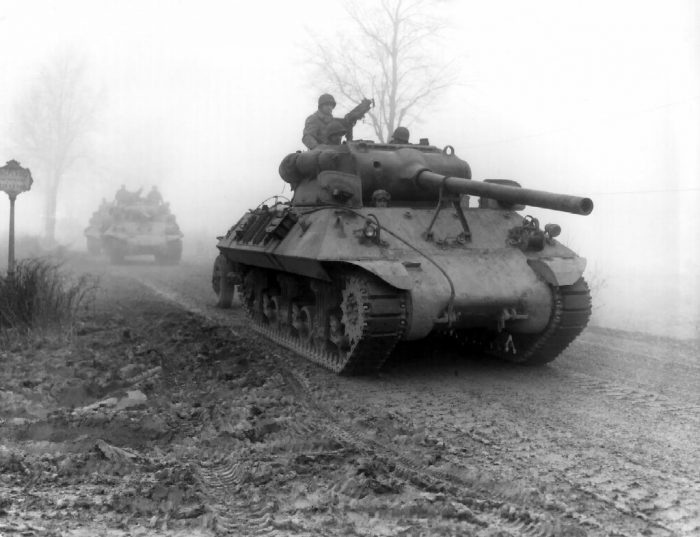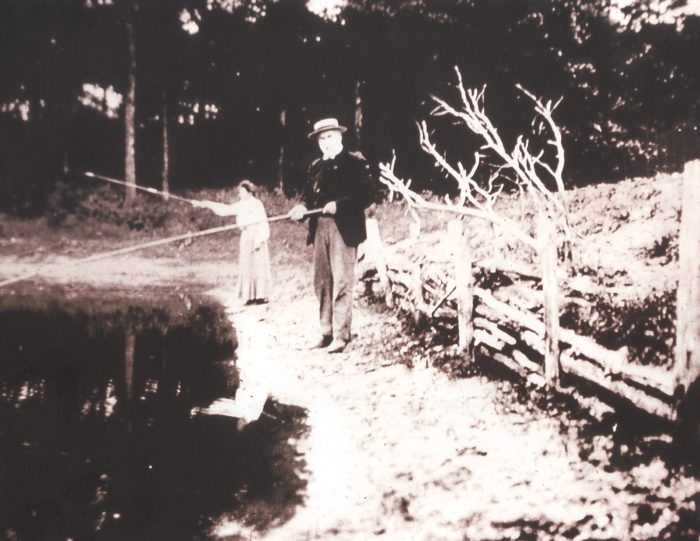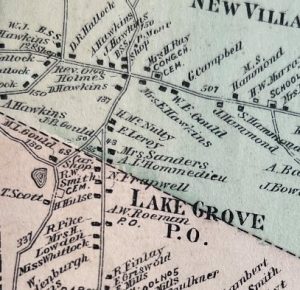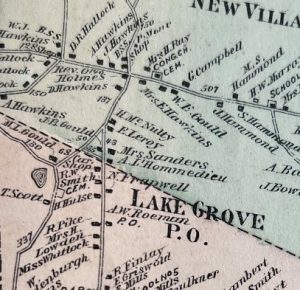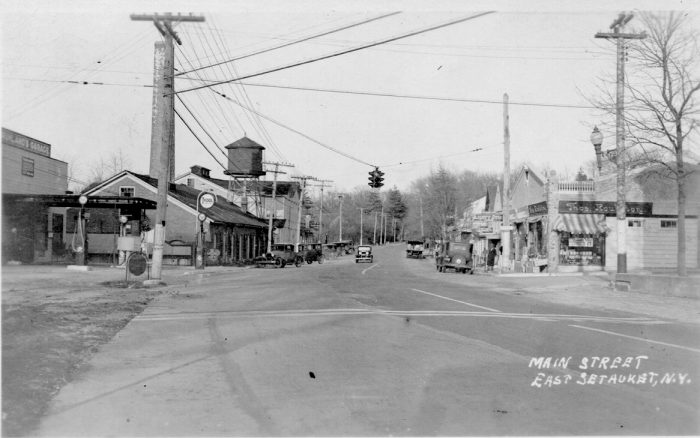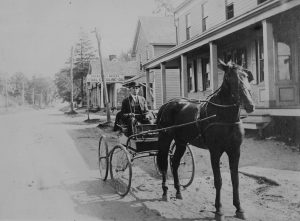Gift is Significant Part of Dowling College’s Special Collection
The Suffolk County Vanderbilt Museum has received the largest donation of archival materials since its inception in 1950. The gift, donated by the Friends of Connetquot River State Park Preserve, includes materials from the former Dowling College and Vanderbilt Historical Society collections, comprising photographs, maps, and written correspondence. The donation marks a significant moment in the broader historical community’s efforts to preserve and promote the heritage of the region.
This donation will aid researchers and historians in forming an understanding of late-nineteenth and early-twentieth century Long Island, and it will greatly augment the kinds of programming that can be offered by the Vanderbilt, Suffolk County’s first museum and public park.
Paul Rubery, Director of Curatorial Affairs at the Vanderbilt Museum, and Janet Soley, President of the Friends of Connetquot, worked alongside New York State and Suffolk County officials to determine the best way to preserve the content of these archives for future generations. They established that, because the VanderbiltMuseum aims to interpret the totality of the Vanderbilt family’s contributions to the development of Long Island, Centerport would be the ideal resting place for the wide-ranging collections.
All items donated by the Friends of Connetquot are now being processed and digitized by staff at the Vanderbilt Museum. These measures put to rest what some once regarded as the uncertain fate and future of a vast collection of historical materials assembled in Oakdale by local historians and academic archivists.
Dowling College Materials
Dowling College was established in 1968 at Idle Hour, the former mansionand 900-acre estate built in 1900 for William Kissam Vanderbilt (1849-1920). Vanderbilt was the father of William K. Vanderbilt II (1878-1944), who created the Eagle’s Nest estate, home of the Suffolk County VanderbiltMuseum.
Dowling College’s paper records were in jeopardy when the school ceased operations in 2016. Nearly a year later, its administrative and collegiate archives were transferred to Adelphi College, the college’s former parent institution. This arrangement spoke to Adelphi’s mission and directly benefited the wide network of Dowling alumni in the region. However, certain items were not covered in the original agreement between Adelphi and RSR Consulting, LLC—the company charged with liquidating assets in the bankruptcy proceedings—and those materials were folded into the listing placed up for bankruptcy auction.
The bankruptcy sale of Dowling’s assets was complicated by false starts and unrealized transactions. After the initial deal with Princeton Educational Center failed to transpire, Mercury International, LLC, acquired the property in 2017 for $26.1 million. During Mercury’s ownership, a representative from that company offered boxed materials in good condition to the Friends of Connetquot. For Mercury, the campus property and outbuildings were the primary concern, not the papers still left in many areas of the campus. Mercury ceased ownership of the property in December 2021, when the Chinese state-owned enterprise China Orient Asset Management purchased a majority stake in their parent company for $42 million.
The items given to the Friends of Connetquot—and now, through their donation, to the Suffolk County Vanderbilt Museum—include the Muriel Vanderbilt, National Dairy, and Peace Haven collections.
Additional Material
Additional sections of the archives donated by Friends of Connetquot were acquired by that organization at auction. The Friends of Connetquot is dedicated to the preservation, conservation, and history of the 3,473-acre State Park Preserve, with the legacy of the South Side Sportsmen’s Club as their primary focus. The Sportsmen’s Club was among the elite social clubs of the late-nineteenth and early-twentieth century, claiming presidents and titans of business among its membership.
Below are brief descriptions of the collections donated to the Suffolk County Vanderbilt Museum by the Friends of Connetquot River State Park Preserve. To increase access to public history and stimulate interest in Long Island’s heritage, the Vanderbilt Museum will make them available online in the coming months.
Muriel Vanderbilt Collection: Muriel Vanderbilt was the daughter of William Kissam Vanderbilt II and Virginia Graham Fair. She was an American socialite and an accomplished breeder of thoroughbred racehorses.
The Muriel Vanderbilt collection contains personal photographs and other materials that she donated to Dowling College in 1970. Some collection highlights include wedding and engagement photographs, in which Muriel wears the bridal veil of Marie Antoinette; extensive documentation of horse stables and rodeos; images of family members; and architectural photography of breathtaking estates.
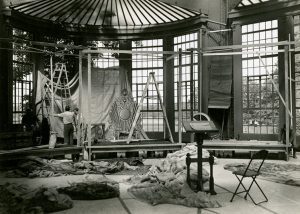
Peace Haven Cult: The collection associated with the Peace Haven Cult is among the most unique archives on Long Island. In 1937, a group called the Royal Fraternity of Master Metaphysicians purchased William Kissam Vanderbilt’s Idle Hour and renamed it “Peace Haven.” Founded by James Bernard Schafer, a doctor from North Dakota, the Master Metaphysicians integrated behaviorist psychology, Christian spiritualism, and mediative techniques to achieve certain personal goals. The cult caught the attention of the international press during the custody proceedings over “Baby Jean.”
“Baby Jean” was central to the cult’s ambitions. The Master Metaphysicians informally adopted “Baby Jean” from her mother, a local waitress, and placed her at the center of a grand metaphysical experiment. Schafer maintained that he could give the child eternal life with an exclusively plant-based diet and protection from negative stimuli. The Master Metaphysicians returned “Baby Jean” to her birth parents after less than a year, and her mother eventually filed a legal suit against the cult.
National Dairy Collection: After serving as the headquarters for the Royal Fraternity of Master Metaphysicians, the Idle Hour estate was acquired by National Dairy Research Labs. National Dairy, which would eventually become Kraft Foods, purchased the estate’s mansion, carriage house, and twenty-three acres of land in 1947. The collection features photographs of the interior and exterior of the buildings at the time of sale, extensive documentation of the newly created research laboratories, and some press materials.
Bronco Charlie’s Collection: Bronco Charlie’s was a family restaurant located in Oakdale. Its owner, “Bronco” Charlie Miller, was a revered storyteller who claimed that he was the youngest ever rider on the Pony Express. Although many of his stories were undoubtedly fanciful, his tremendous life was chronicled in a range of print media. Highlights from the Bronco Charlie Collection include plates, menus, photographs, and correspondence.
Artists’ Colony Collection: Founded in 1926 on the grounds of the William Kissam Vanderbilt I’s summer estate, the Idle Hour Artists’ Colony was inspired by other prominent cultural communities like Yaddo, McDowell, and the Barbizon. Lucy Thompson, a socialite and the wife of a wealthy oil merchant from Texas, purchased the property and renovated its stables and outbuildings to accommodate a theater, restaurant, and artist studios. Highlights from the Artists’ Colony Collection include a map of the colony, real estate listings from the 1920s, and a watercolor from one of the original artists.

